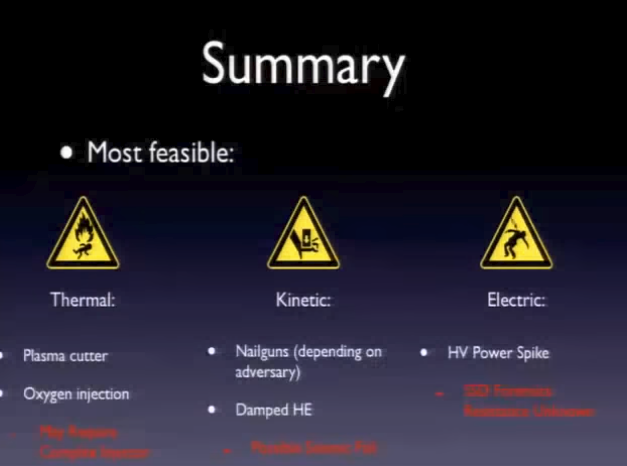Imagine you are carrying highly sensitive information with you, maybe on a mission in a war zone. You get in an ambush and quickly need to erase all the files before they fall in the wrong hands. This has to happen within seconds.
What devices are used for such operations, are there special hard drives which have a physical switch to erase all memory at once? I'm thinking of active storage devices, which lose all information once the power supply is separated.
Addendum 1: As Artem S. Tashkinov pointed out in his answer, for most use cases encryption is enough. But I think there is information so valuable, that even in 50 years, when quantum code breaking may become a reality, it can be harmful. So I edited my question to ask explicitly for a method, which does not leave any way, as computationally hard it may be, to recover any data. I guess this is only possible by physically destroying the components, which hold the information.
Addendum 2:
- Issues with thermite: Data drives seem to be quite resilient to thermite and even military grade thermate as shown at a talk at defcon 23. It doesn't seem like using either of these substances is a reliable way of getting rid of the data. The experimental results showed that the drive was mostly intact after the thermite/thermate attack and it seems unlikely that Curie temperature has been reached throughout the plate. (DEF CON 23 - Zoz - And That's How I Lost My Other Eye...Explorations in Data Destruction (Fixed), thanks to Slava Knyazev for providing this ressource).
- Issues with encryption: While quantum code breaking will not break all existing encryption (as pointed out by Conor Mancone) there is still a risk that flaws in the encryption are known or will be discovered in the future.

